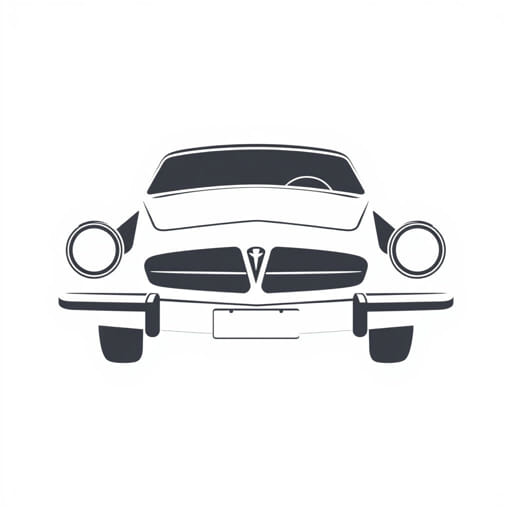Once a proud symbol of American innovation and engineering, Studebaker remains a nostalgic name among automobile enthusiasts. People often wonder whether this legendary company is still in business today. With a rich history spanning over a century, Studebaker’s journey from a 19th-century wagon manufacturer to a car company, and eventually its decline, makes for a compelling story. But is Studebaker still producing vehicles? Has the brand survived the turbulence of the modern automotive industry? Let’s take a closer look at the current status of Studebaker and where its legacy stands today.
The Origins of Studebaker
Studebaker began as a family-run business in the mid-1800s in South Bend, Indiana. Originally, the company manufactured wagons used by farmers, miners, and even the U.S. military. By the early 1900s, Studebaker transitioned into the automobile industry, producing both electric and gasoline-powered vehicles. This pivot proved successful, positioning the company as a respected carmaker through the first half of the 20th century.
Key Milestones in Studebaker’s Automotive History
- 1902: Studebaker produced its first electric vehicle.
- 1904: The company introduced its first gasoline-powered car.
- 1911: Officially became the Studebaker Corporation.
- 1930s-40s: Known for reliability and stylish design, Studebaker earned a strong market presence.
- 1950s: Introduced innovative models like the Studebaker Champion and Hawk.
Despite its achievements, Studebaker struggled financially, especially during the post-war automotive boom where larger manufacturers dominated the market. Fierce competition, rising costs, and difficulties in merging with other companies led to its decline.
Studebaker’s Merger and Exit from Auto Manufacturing
In 1954, Studebaker merged with the Packard Motor Car Company, forming Studebaker-Packard Corporation. Unfortunately, this merger failed to rejuvenate the company. By 1962, all Packard models were discontinued, and the company returned to using only the Studebaker name.
In December 1963, Studebaker ceased automobile production at its South Bend plant. Production briefly continued in Hamilton, Ontario, but by March 1966, the last Studebaker car rolled off the assembly line, marking the end of an era for the iconic brand.
What Happened After the Company Stopped Making Cars?
Although Studebaker stopped producing cars in 1966, the company itself did not dissolve immediately. Instead, it shifted its focus toward other industries. Studebaker had diversified its holdings even before ending auto production, investing in companies involved in defense, chemicals, and electronics.
Studebaker-Worthington Merger
In 1967, Studebaker merged with Worthington Corporation, forming Studebaker-Worthington. This new entity focused on industrial manufacturing, power equipment, and other non-automotive sectors. Over time, Studebaker’s identity as a carmaker faded as the company became absorbed into other corporate structures.
Does Studebaker Still Exist as a Business?
As of today, Studebaker no longer exists as an independent business. The brand has not manufactured automobiles since the 1960s and its corporate identity has since been retired or absorbed into other entities. By the late 1970s, Studebaker-Worthington was acquired by McGraw-Edison, which itself was later purchased by Cooper Industries. These transitions erased any remaining business trace of the original Studebaker corporation.
No Current Operations Under the Studebaker Name
There is no modern-day company operating under the name ‘Studebaker’ that continues the legacy of making or selling vehicles. The brand is effectively defunct in a commercial sense. However, the name lives on through automotive museums, classic car clubs, and enthusiast groups that maintain and restore vintage Studebaker cars.
The Studebaker Legacy in American Culture
Although no longer in business, Studebaker has left a lasting legacy in American history and pop culture. Its innovative designs, such as the bullet-nose front and the sleek Avanti sports car, still draw admiration today. Restored Studebaker vehicles are regular features at classic car shows and automotive museums across the United States.
Preservation Through Enthusiast Communities
Studebaker enthusiasts have ensured that the brand’s heritage continues. There are dedicated clubs, including the Studebaker Drivers Club, with thousands of members worldwide. These communities are passionate about preserving Studebaker vehicles, sharing knowledge, and celebrating the company’s history.
Studebaker National Museum
Located in South Bend, Indiana the birthplace of Studebaker the Studebaker National Museum showcases the company’s rich history. Visitors can view classic models, concept cars, military vehicles, and even presidential carriages. The museum plays a vital role in preserving the legacy of the once-mighty brand.
Attempts to Revive the Studebaker Name
Over the years, there have been scattered efforts and rumors about reviving the Studebaker brand. Some entrepreneurs and car enthusiasts have proposed new vehicle concepts inspired by Studebaker’s designs. However, none of these ventures have resulted in the relaunch of the brand as a mainstream car manufacturer.
While interest exists in bringing back classic brands, such revivals face many challenges. These include high production costs, limited market demand, and stiff competition from established automakers. As of now, no viable company has succeeded in bringing Studebaker back to life in a commercial capacity.
Is Studebaker Still in Business?
To answer the question directly: no, Studebaker is not still in business. The company ceased automobile production in 1966 and gradually disappeared through mergers and acquisitions. There is no longer a corporate entity manufacturing products under the Studebaker name.
However, the Studebaker legacy remains alive in the hearts of car enthusiasts, museums, and historical archives. Its story is a testament to innovation, resilience, and the spirit of American industry. While you can’t walk into a dealership and buy a new Studebaker today, the name continues to inspire nostalgia, admiration, and appreciation among those who remember what it once represented.
